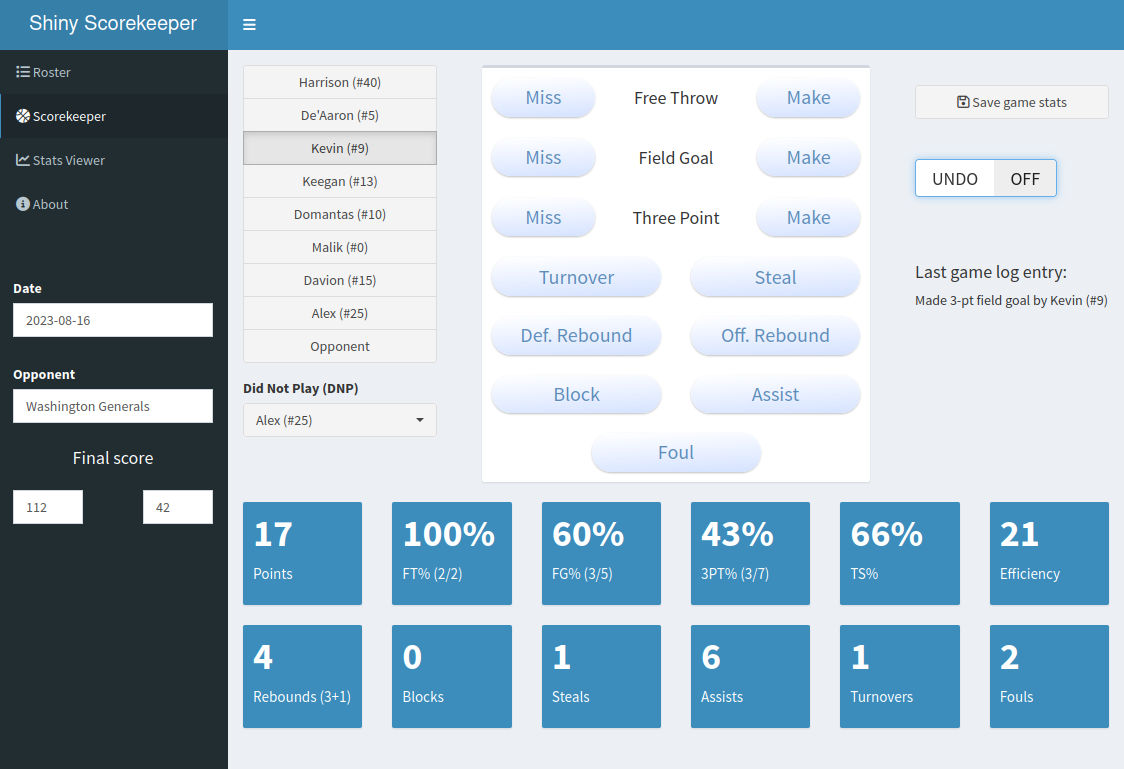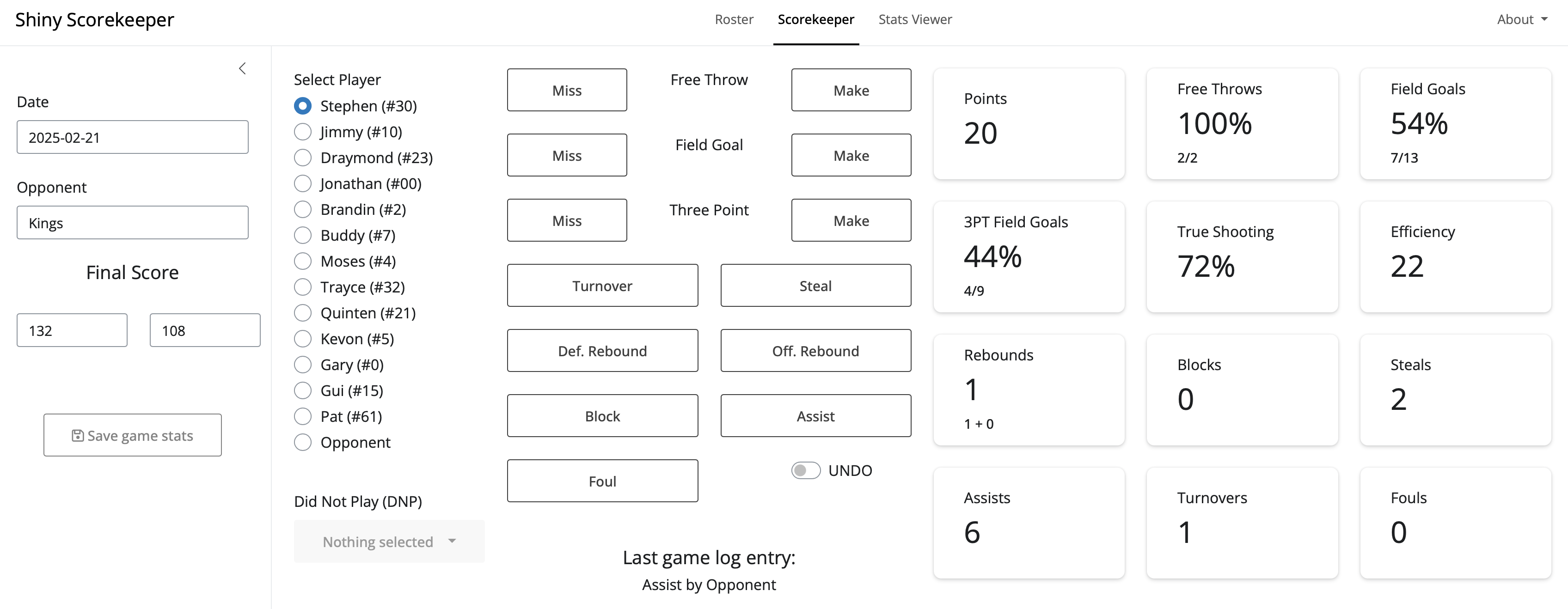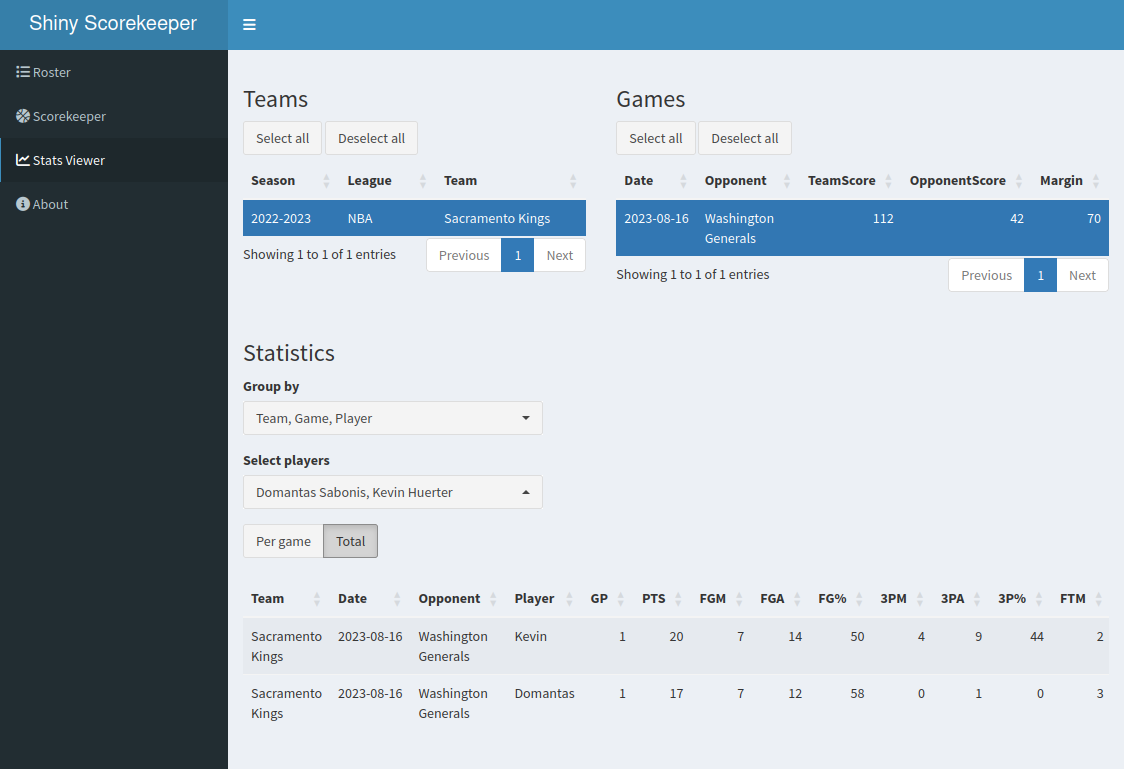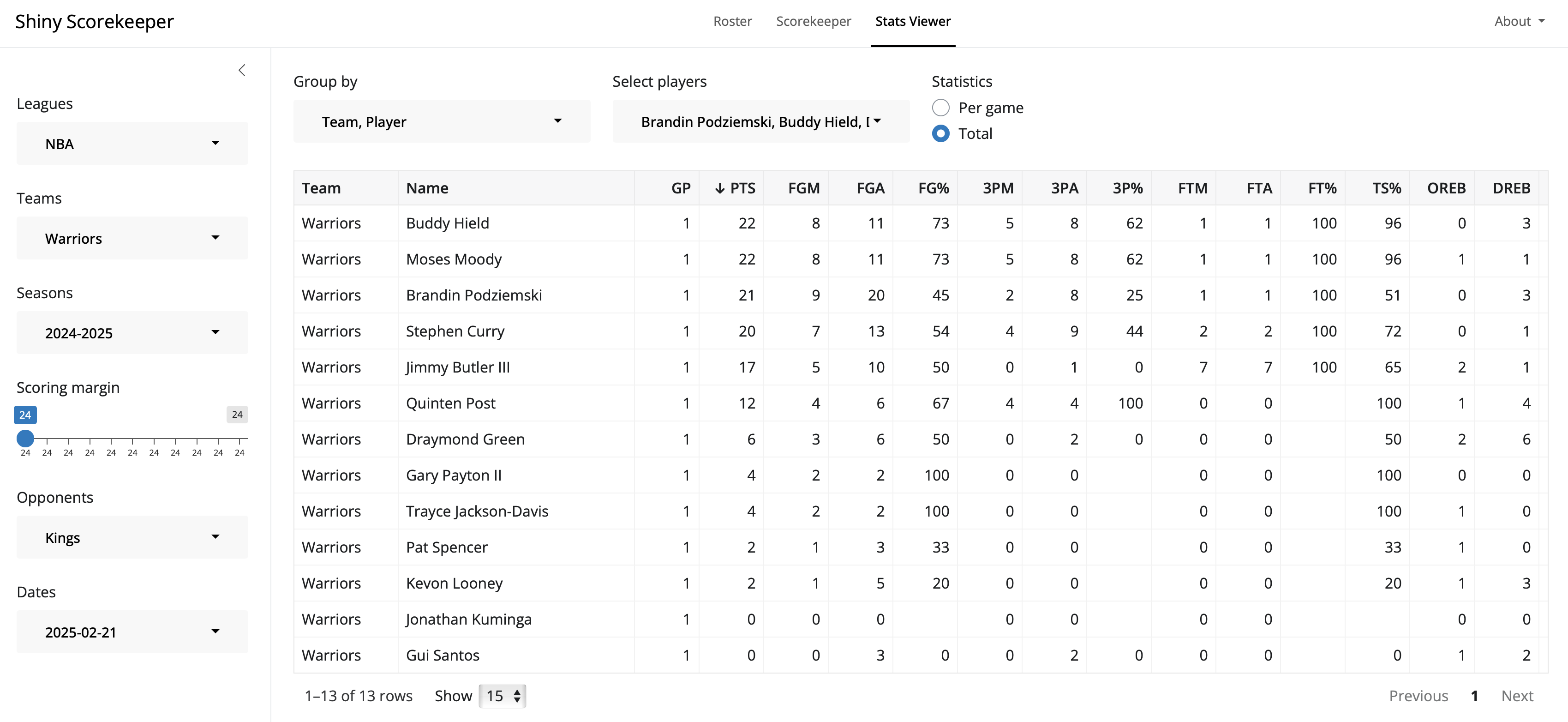Updating Shiny Scorekeeper app with Shiny modules and bslib
Shiny Scorekeeper is a basketball scorekeeper app built with the Shiny web framework for R. The app was initially built in 2018, but I recently decided to update it to improve maintainability and provide a more modern look. It’s sort of a strange choice to invest time in this project in 2025. I built the app for scoring videos of my son’s youth basketball games, but my son is no longer a youth and I haven’t used the app in years. However, I have a fondness for the app because I had fun building it initially and it served me well for the years that I used it.
This new version is not about adding new features. The core functionality in the app is relatively unchanged, e.g., I’m still using editable DataTables from the DT package to create and manage rosters. One of the big changes was splitting the code among Shiny modules and an R package. In the previous version, the server.R file was over 800 lines of code that I didn’t find very easy to maintain or extend.
I moved some of the code into an R package partly because I’ve recently had fun playing with Tk in R and Scheme (see this post) and thought it might be fun to try to build a version of the app with a Tk interface (as an alternative to the Shiny interface). I had plenty of moments, though, where I regretted adding the extra overhead of having that code in a separate R package, especially considering the payoff is mostly hypothetical and delayed (e.g., future maintenance or different interface). I also didn’t make any effort to think about whether the functions in the package are written in a general way that will work equally well with a Tk interface.
Despite building many Shiny apps over the years, including some reasonably complex apps, I had never used Shiny modules. One one of the primary objectives in this Shiny Scorekeeper refresh project was to learn how to use Shiny modules. My use of modules here was limited to the simplest use case, though, i.e., splitting code among files. The app is comprised of three sections (Roster, Scorekeeper, Stats Viewer) that led to obvious breaks for splitting into modules.
The biggest friction that I encountered with using modules is that auto reload is not triggered by changes to module files. Fortunately, the auto reload behavior will be included in a future version of Shiny (see this pull request). The most common mistake that I made with modules was forgetting to namespace UI elements, which often produces unexpected behavior without any errors sent to the R console. The only other aspect that I found a little tricky was understanding how to pass values around among the modules.
The other big change was switching from shinydashboard to bslib. Design is not one of my strengths so I tend to stick with default themes and colors. By default, shinydashboard uses too much color for my liking.

The bslib default uses very little color, which looks modern to me, but bslib also provides many themes.

I’ve started using bslib in nearly all of my Shiny apps. The default layouts look better than stock Shiny (or shinydashboard) apps and the elements compose nicely to create more complex layouts. I think the new bslib version of Shiny Scorekeeper uses space more effectively, which followed naturally from the different default layout options (e.g., panel navigation in the top bar instead of the sidebar for page_navbar).
I decided to stick to more of the standard Shiny UI components in this version. That was partly because I perceived a more uniform look with those elements when using bslib. The one 3rd-party component that I couldn’t give up was shinyWidgets::pickerInput. When using multiple select, the Shiny alternative (selectInput) is uglier and provides far fewer options (e.g., select/deselect all, live search, etc.).
The Stats Viewer in Shiny Scorekeeper changed more than any other section. Previously, I used DT tables as the mechanism for sorting and filtering the team and game data (by selecting rows in the tables). This approach allowed for compact presentation of the details associated with each team and game, but provided an unconventional interface that I ended up not liking.

For the new version, I have hierarchical inputs to filter down to the desired game stats. This approach leads to a relatively large hierarchy: leagues -> teams -> seasons -> scoring margin -> opponents -> dates. Changes at the top of the hierarchy are propagated dynamically to update all of the other inputs. This requires more code than my previous approach with tables and could lead to notable lag in updating of the game stats table as data size increases.

I also replaced the DT game stats table with a reactable version. DT tables have been my go-to option for Shiny apps for many years, but I recently read that the DT author thinks reactable is generally better than DT. I would have used reactable for all tables in Shiny Scorekeeper, but reactable tables are not editable so I needed to stick with DT tables for the roster section. I also think it is nice that the game stats table has a different look to reinforce that it is not editable.